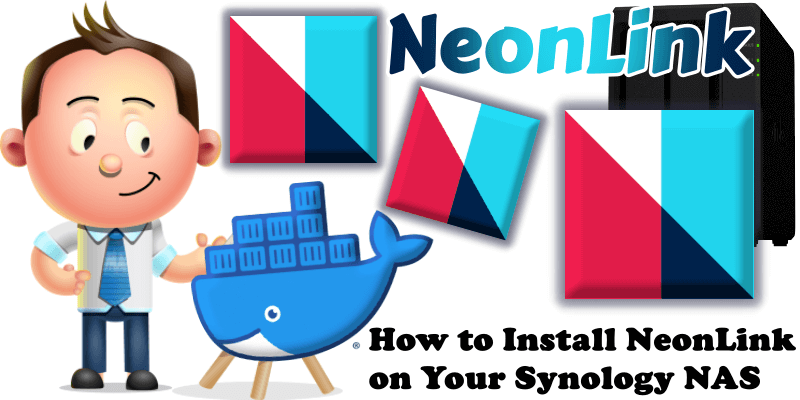
NeonLink is a simple and open-source self-hosted bookmark service. It is lightweight, uses minimal dependencies, and is easy to install via Docker. Due to the low system requirements, this application is ideal for deployment on the Raspberry and Synology NAS. In this step by step guide I will show you how to install NeonLink on your Synology NAS using Docker & Portainer.
STEP 1
Please Support My work by Making a Donation.
STEP 2
Install Portainer using my step by step guide. If you already have Portainer installed on your Synology NAS, skip this STEP. Attention: Make sure you have installed the latest Portainer version.
STEP 3
Go to File Station and open the docker folder. Inside the docker folder, create one new folder and name it neonlink. Follow the instructions in the image below.
Note: Be careful to enter only lowercase, not uppercase letters.

STEP 4
Now create two new folders inside the neonlink folder that you created at STEP 3 and name them data and media. Follow the instructions in the image below.
Note: Be careful to enter only lowercase, not uppercase letters.

STEP 5
Right click on the neonlink folder that you have previously created at STEP 3 then click Properties. Follow the instructions in the image below.
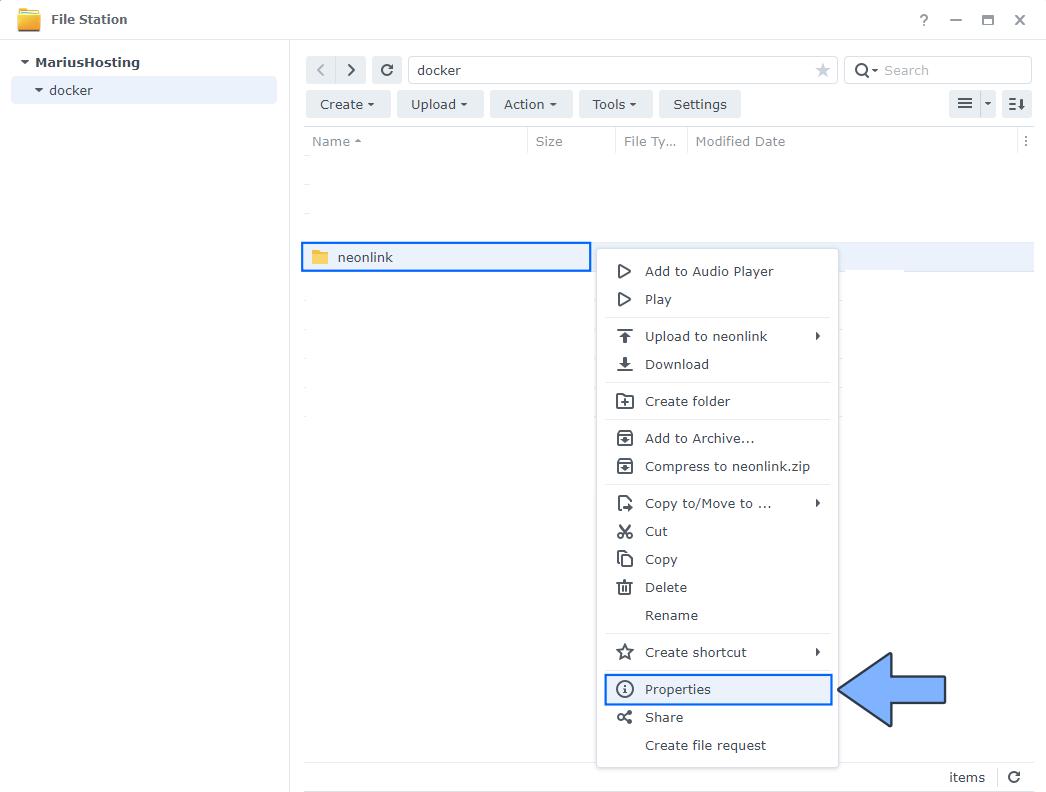
STEP 6
Go to the Permission tab, then click Advanced options. From the drop-down menu, choose “Make inherited permissions explicit“. Follow the instructions in the image below.

STEP 7
Select Everyone then click the Edit tab. Follow the instructions in the image below.

STEP 8
Check all Read and Write Permissions. Click Done. Follow the instructions in the image below.
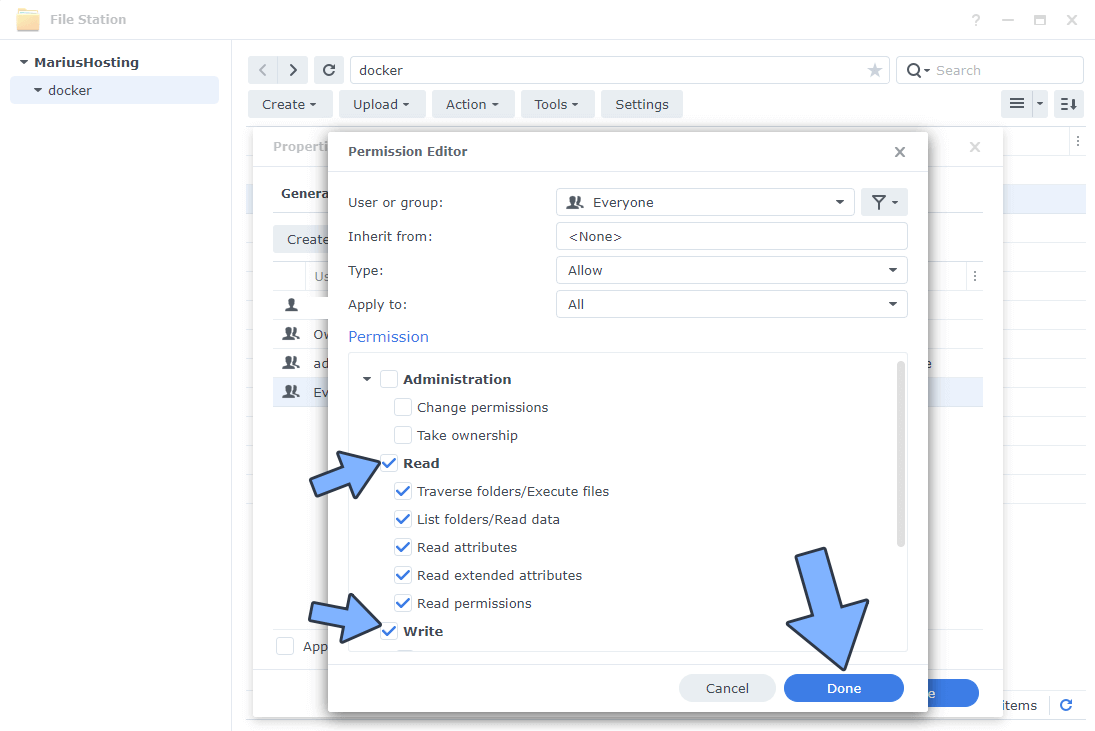
STEP 9
After you click Done on STEP 8, check “Apply to this folder, sub-folders and files“. Click Save. Follow the instructions in the image below.
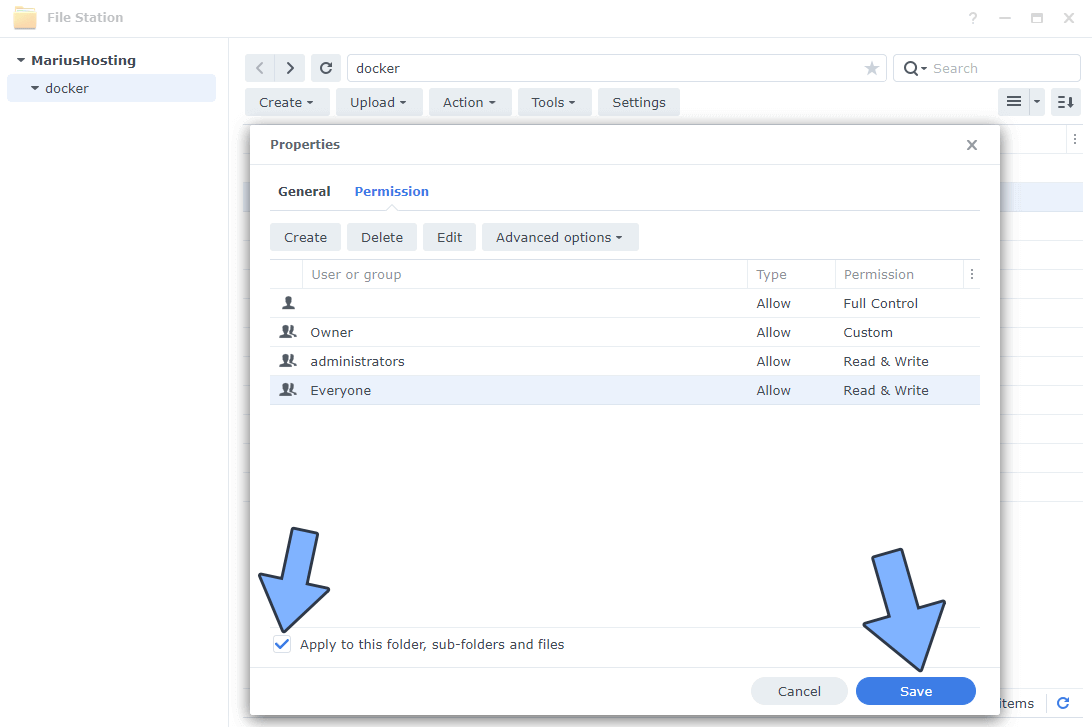
STEP 10
Log into Portainer using your username and password. On the left sidebar in Portainer, click on Home then Live connect. Follow the instructions in the image below.

On the left sidebar in Portainer, click on Stacks then + Add stack. Follow the instructions in the image below.

STEP 11
In the Name field type in neonlink. Follow the instructions in the image below.
version: "3.9"
services:
neonlink:
image: alexscifier/neonlink
container_name: NeonLink
mem_limit: 2g
cpu_shares: 768
security_opt:
- no-new-privileges:true
restart: on-failure:5
volumes:
- /volume1/docker/neonlink/data:/app/data:rw
- /volume1/docker/neonlink/media:/app/public/static/media/background:rw
ports:
- 6433:3333
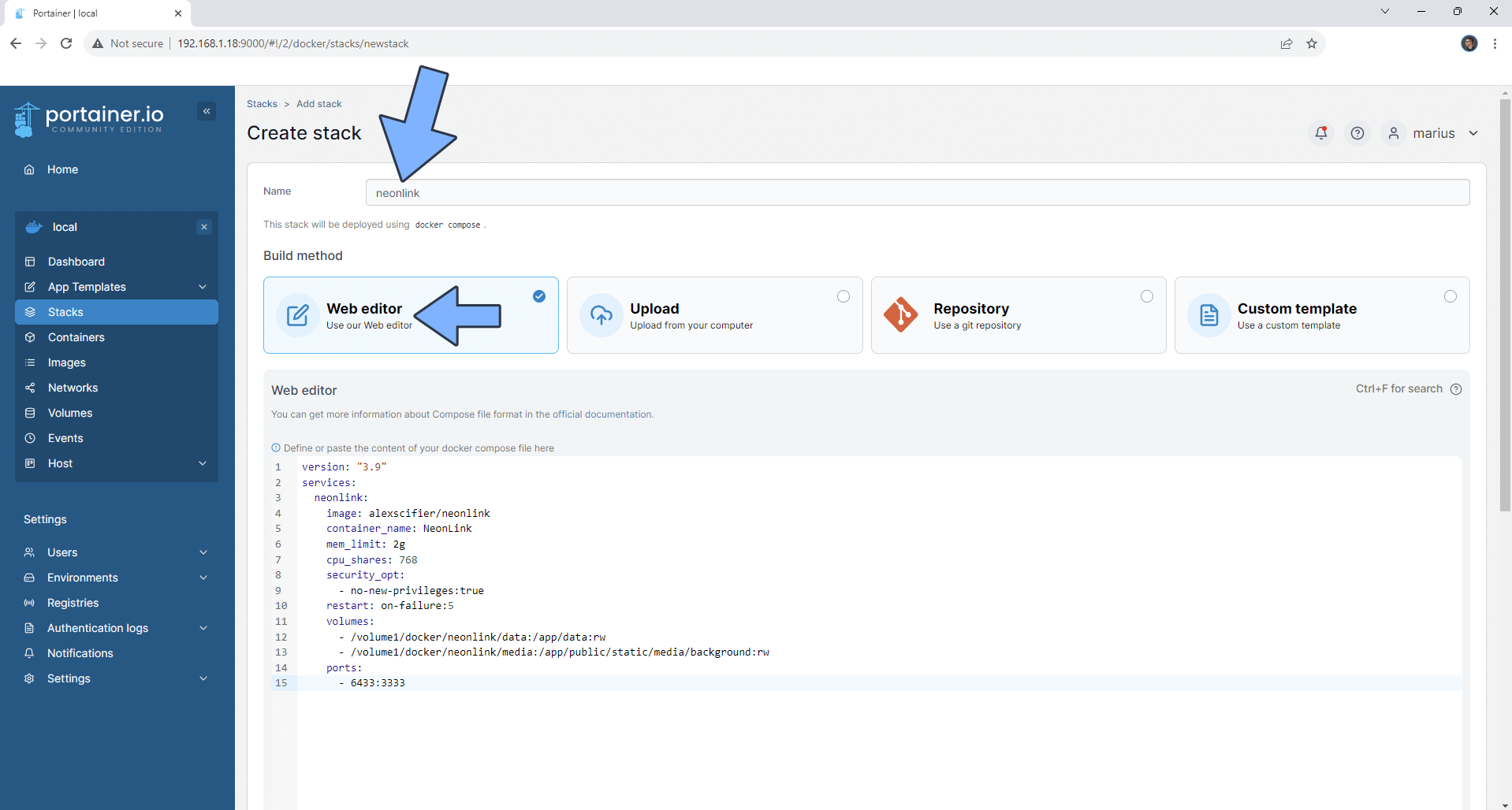
STEP 12
Scroll down on the page until you see a button called Deploy the stack. Click on it. Follow the instructions in the image below. The installation process can take up to a few minutes. It will depend on your Internet speed connection.
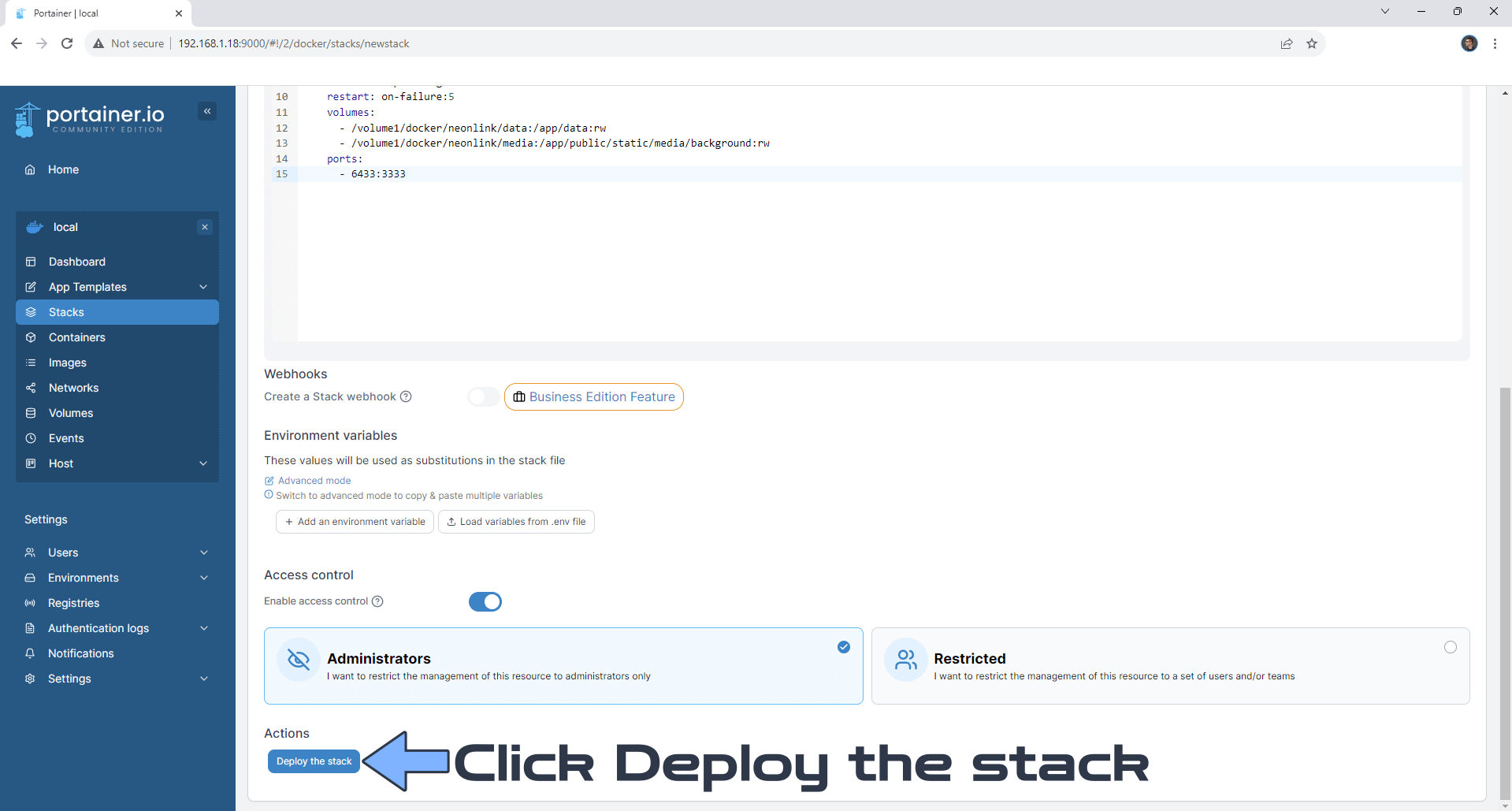
STEP 13
If everything goes right, you will see this message at the top right of your screen: “Success Stack successfully deployed“.

STEP 14
🟢Please Support My work by Making a Donation. Almost 99,9% of the people that install something using my guides forget to support my work, or just ignore STEP 1. I’ve been very honest about this aspect of my work since the beginning: I don’t run any ADS, I don’t require subscriptions, paid or otherwise, I don’t collect IPs, emails, and I don’t have any referral links from Amazon or other merchants. I also don’t have any POP-UPs or COOKIES. I have repeatedly been told over the years how much I have contributed to the community. It’s something I love doing and have been honest about my passion since the beginning. But I also Need The Community to Support me Back to be able to continue doing this work.
STEP 15
The installation process can take up to a few seconds/minutes. It will depend on your Internet speed connection. Now open your browser and type in http://Synology-ip-address:6433 Add your own Username and Password then click Register. Follow the instructions in the image below.
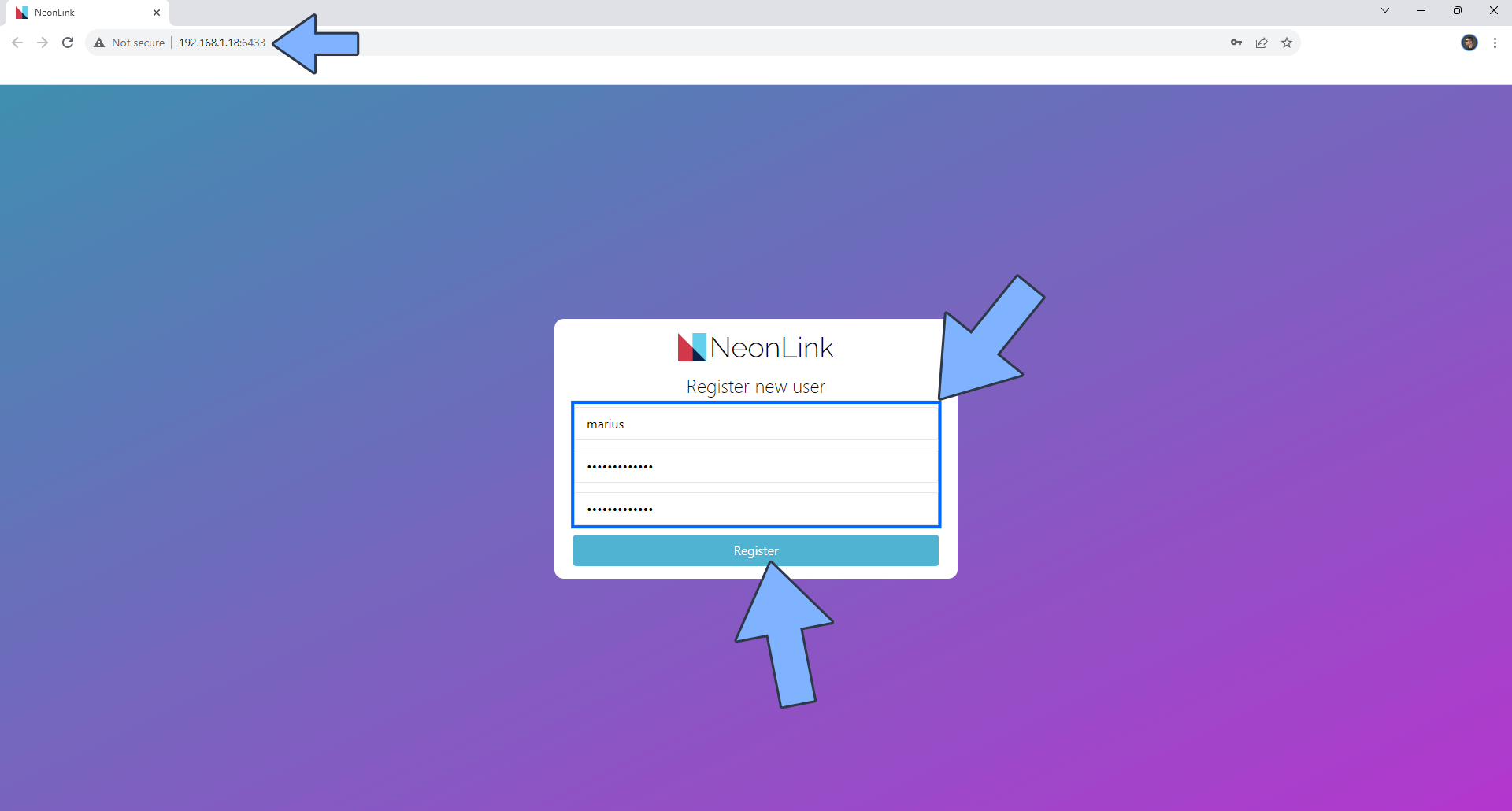
STEP 16
Type in your own Username and Password that you have previously created at STEP 15 then click Login. Follow the instructions in the image below.
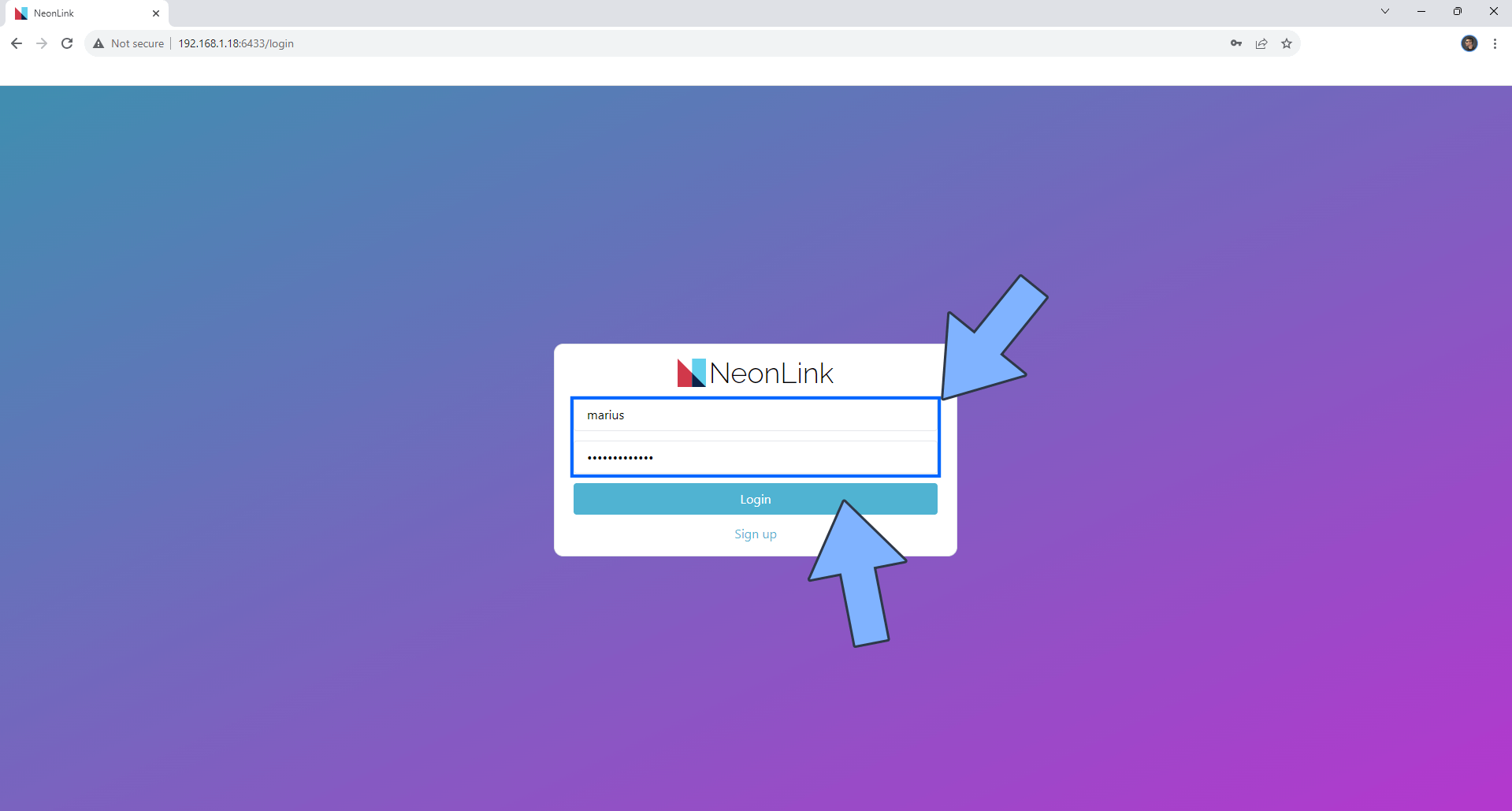
STEP 17
Add you first Bookmark, but remember to create groups in settings first.
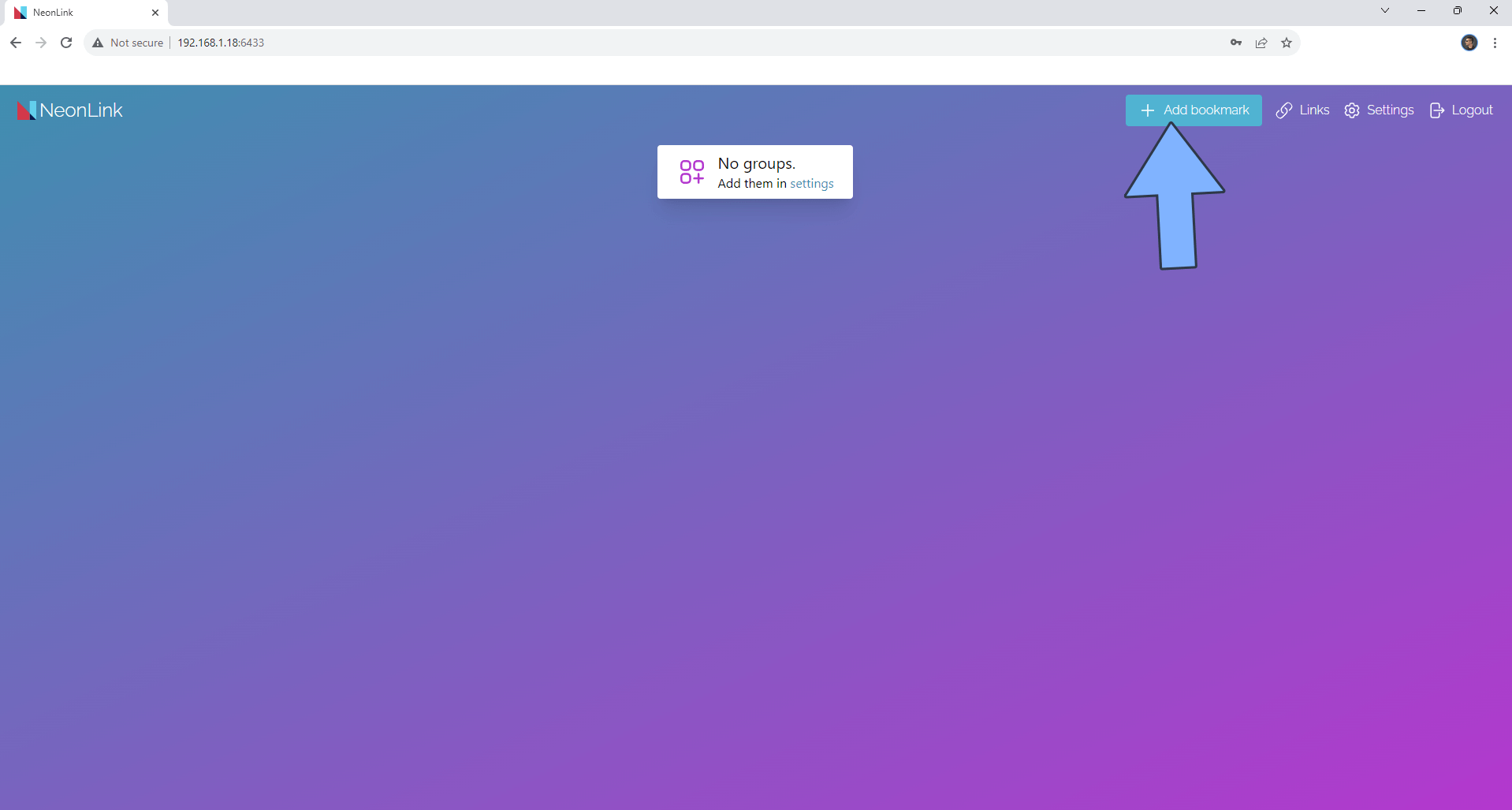
STEP 18
Click the Settings tab to access the settings. Follow the instructions in the image below.
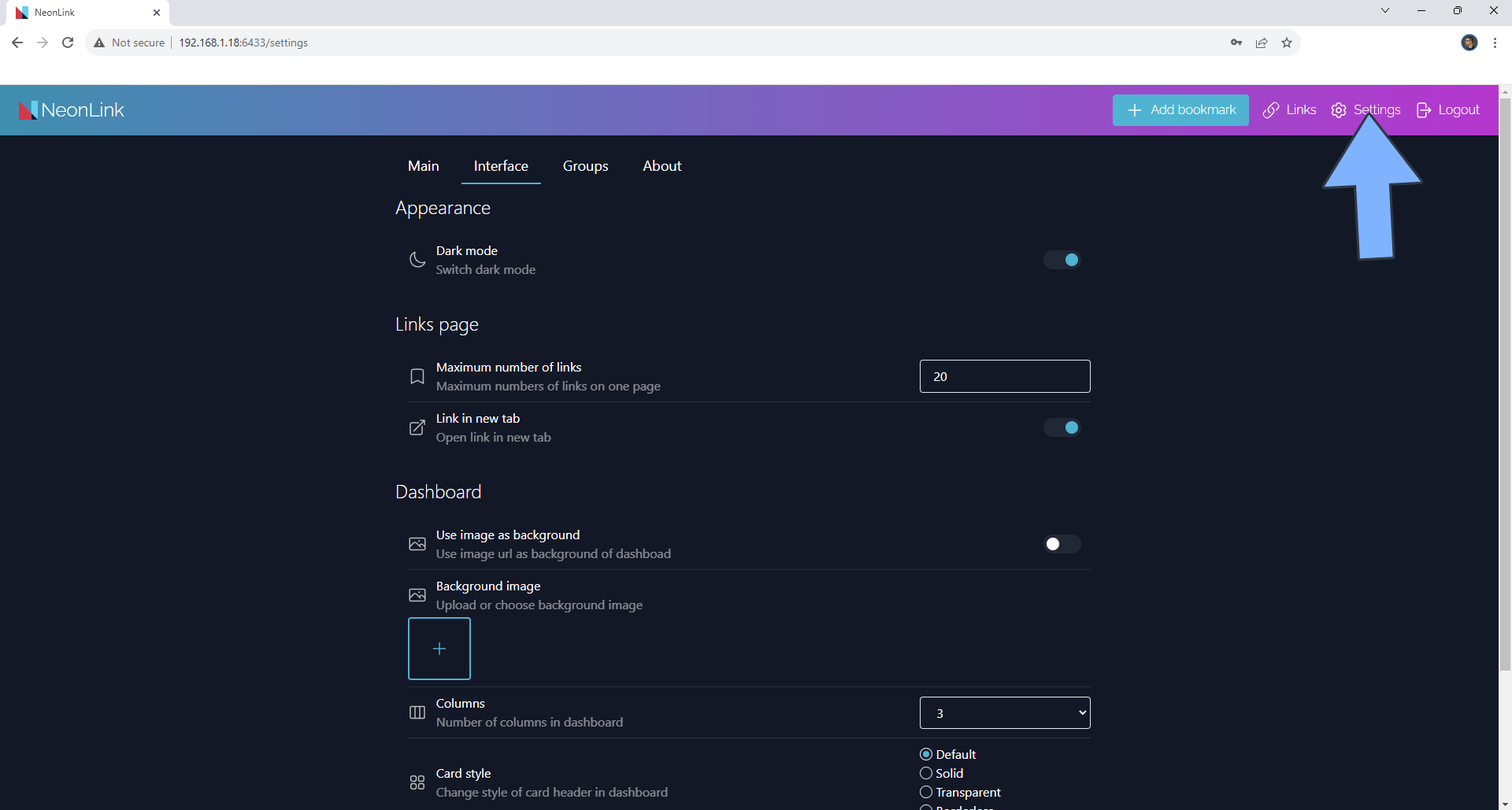
STEP 19
Your NeonLink Bookmarks at a glance!
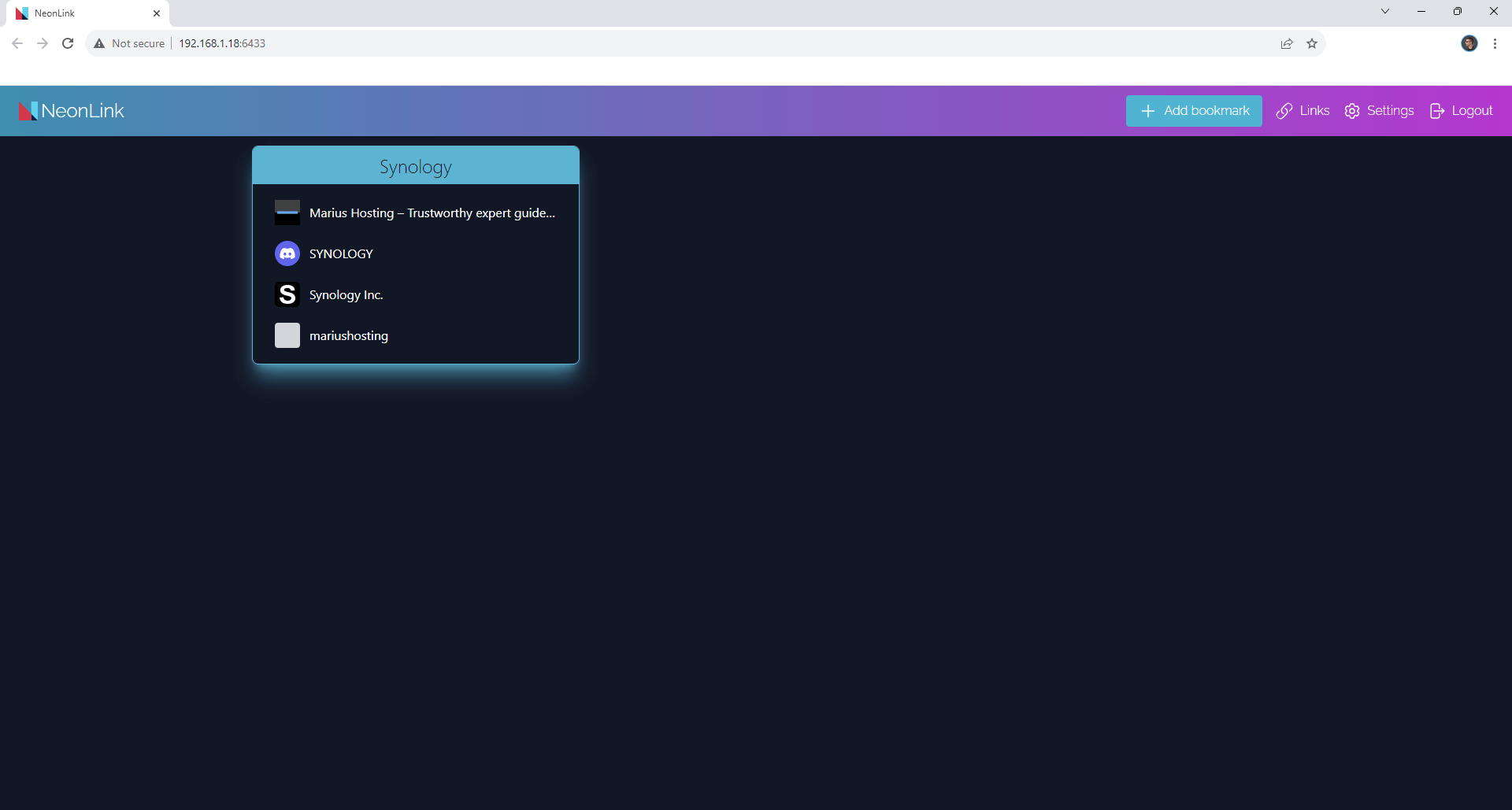
Enjoy NeonLink!
Note: If you want to run the NeonLink container over HTTPS, check How to Run Docker Containers Over HTTPS. In order to make NeonLink work via HTTPS, it’s mandatory to activate WebSocket.
Note: Can I run Docker on my Synology NAS? See the supported models.
Note: How to Back Up Docker Containers on your Synology NAS.
Note: Find out how to update the NeonLink container with the latest image.
Note: How to Add USB Support on DSM 7.2.
Note: How to Free Disk Space on Your NAS if You Run Docker.
Note: How to Schedule Start & Stop For Docker Containers.
Note: How to Activate Email Notifications.
Note: How to Add Access Control Profile on Your NAS.
Note: How to Change Docker Containers Restart Policy.
Note: How to Use Docker Containers With VPN.
Note: Convert Docker Run Into Docker Compose.
Note: How to Clean Docker.
Note: How to Clean Docker Automatically.
Note: Best Practices When Using Docker and DDNS.
Note: Some Docker Containers Need WebSocket.
Note: Find out the Best NAS Models For Docker.
Note: Activate Gmail SMTP For Docker Containers.
This post was updated on Thursday / October 2nd, 2025 at 12:02 AM
